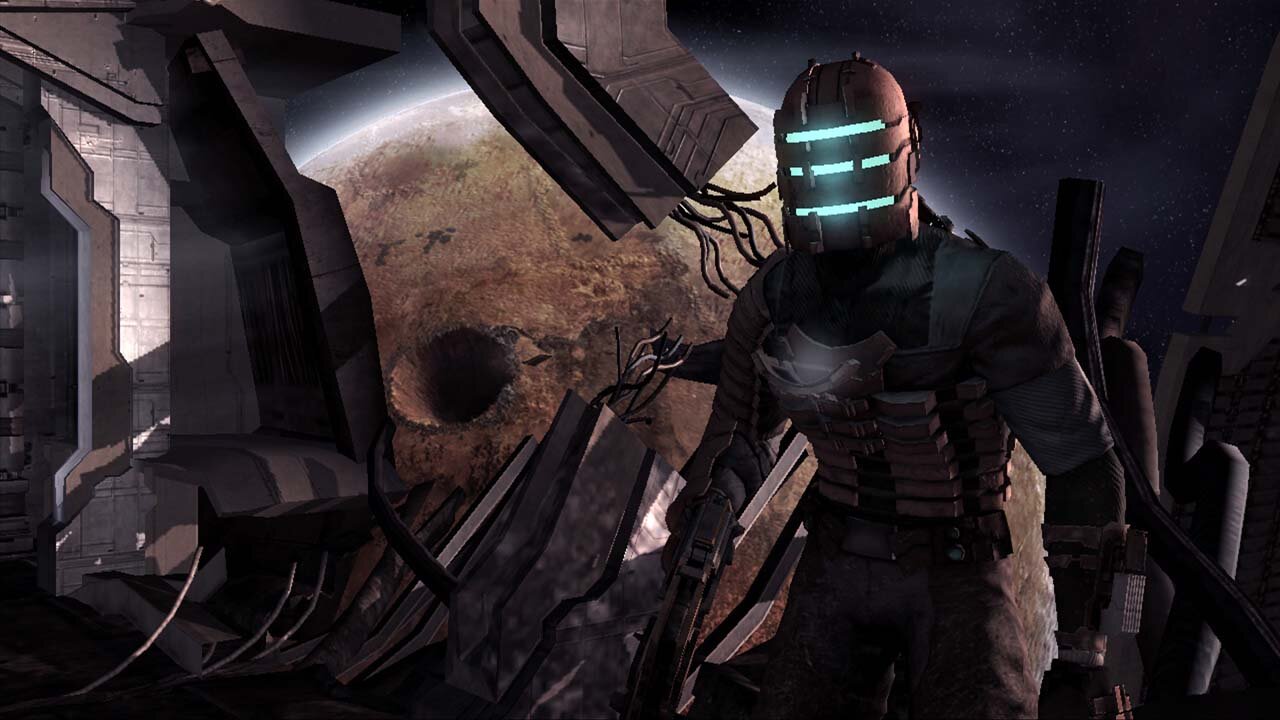
1986 bore witness to one of gaming's watershed moments, an event whose profound impact on the medium is still seen today, in games released every week. Protagonists, game worlds, sound effects and art direction; there is no facet of design that this single creative work hasn't influenced. It isn't The Legend of Zelda or Metroid. It isn't Out Run, Adventure Island, Kid Icarus, Bubble Bobble, or Castlevania. It isn't even a videogame.
The gaming legacy of James Cameron's Aliens cannot be overstated. Ignore all thirty games actually based on Aliens and consider the past twenty-two years of gaming as a whole. Syd Mead's art and designs cover every game from R-Type to Halo 3. H.R. Giger's titular xenomorph is mirrored in hundreds of enemies, even beyond Contra. The film's group dynamics and character archetypes are the template for almost every squad-based shooter ever made. And the forbidding labyrinth of colony LV-426 has defined entire genres, particularly the first-person shooter. This movie is the womb of the space marine, modern videogames' essential lead. Aliens made many, many games what they are.
But no one game has ever gone as far in recreating the Aliens experience — allowing you to enter a dilapidated, abandoned science-fiction world full of monsters hunting you from the shadows — as EA Redwood Shores' Dead Space. The Ishimura and its broken, dimly lit passages, the bloodthirsty and relentless necromorphs spawned from the ship's dead, the weapons you wield as Isaac Clarke (pulse rifles, flame throwers); even the dissonant score is lifted straight from the film.
And the gameplay follows Aliens' episodic structure precisely: at the start of all twelve chapters in Dead Space, you are instructed to go to a place, locate that chapter's MacGuffin (a machine that needs fixing, a creature that needs killing), eliminate a specific obstacle and survive a constant and seemingly unstoppable, unpredictable threat aided only by limited supplies and unreliable supporting characters.

Dead Space's premise and aesthetics aren't the only things on loan. The game's third-person shooting and adventuring are straight out of Resident Evil 4, but Dead Space improves on every aspect of that classic. RE4's great advancement in combat was enemies who responded dynamically to gunshots; shoot a zombie in the leg and it falls down, shoot it in the arm and it drops its weapon. Dead Space makes this surgical gunplay its focus: the only way to defeat its disgusting monsters — who are, admittedly, less Aliens and more The Thing — is to remove their limbs. So the majority of encounters are exercises in precision, and each new enemy type offers a tense moment of strategizing.
Dead Space's greatest evolution over Resident Evil 4, though, is its environmental challenges. On the surface, Dead Space's puzzles don't seem to deviate from RE4's find-the-key-then-flip-the-switch approach, but in execution they become wonderfully distinct. One scenario half-way through the game finds you manually jettisoning a gigantic meteor into space (the Ishimura is a "Planet Cracker," a ship that gathers huge chunks of planetary mass and space debris to process for raw materials). Four tethers hold the office-building-sized rock; you have to sever them in zero gravity. Two are in plain sight, so you jettison yourself across the room and quickly disable them. But two others are labeled as objectives on your holographic map. (Menus and maps are projected in front of the player, so you're never pulled out of the action for anything. It's the game's most original piece of design and you should expect to see it imitated by many others in the future.) The map indicates that they're outside of the room, and that's when it dawns on you that you'll need to go into the vacuum of space, crawling over the surface of the meteor, to find the remaining tethers. There's no prompt, no tutoring voice telling you exactly what to do. In oppressive isolation, you have work out the solution on your own. Dead Space transcends its influences in moments like these, becoming more than the sum of its borrowed parts.
So, as an interactive entertainment that works to recreate a very specific experience, Dead Space is an incredible success. In its graphics, audio, controls and design, the game is a paragon of quality. Few games are this beautifully and carefully considered. But Dead Space falters as a narrative. Its story (about an alien artifact that transforms human beings into genocidal monsters) is as derivative as everything else in the game, but devoid of the creative spark that enlivens the play and setting. The few human characters that populate the story are just as shallow; both the plot and cast end up as little more than facilitators for the action. The game would have worked better with you completely isolated: no human contact whatsoever, a lone engineer sent to fix an a ship adrift in space, up against insurmountable odds. I'd hope for the sequel to take this tack, but given EA's support of the game with all sorts of multimedia — a comic series and animated movie are already available — meant to enhance the narrative alone, I doubt it will happen.
The story isn't bad, per se, just beside the point. Dead Space is a flawlessly constructed ride, a digital suit for you to wear that lets you go to a place, see and do things, that you could never do. King Aliens has birthed a shrieking prince. Go play it.
Grade: B
Previous 61FPS Reviews:
LOL
Dragon Quest IV: Chapters of the Chosen
Metal Gear Solid IV
Ninja Gaiden 2
Grand Theft Auto IV
Wii Fit